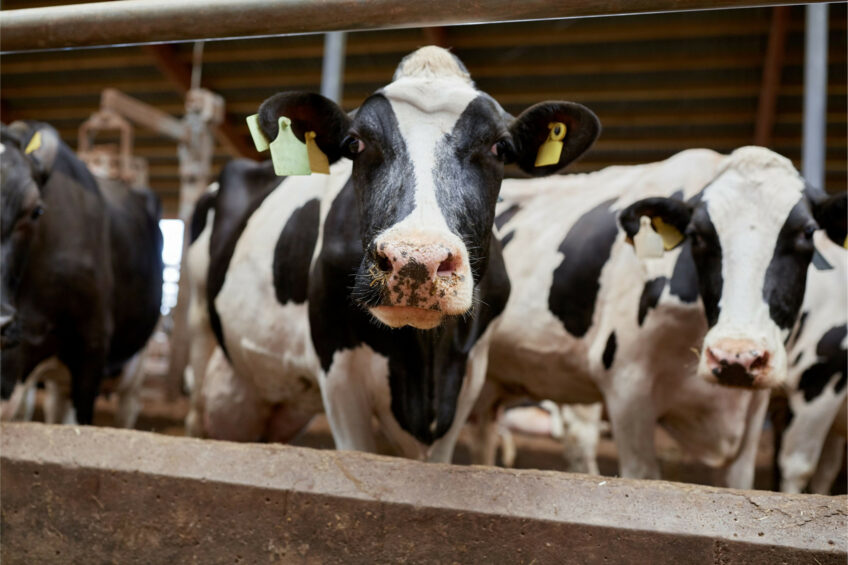Dairy farm: Where do spikes in antibiotic resistant bacteria occur?

New research has mapped wastewater flows on farms and revealed where spikes in antibiotic resistant bacteria in slurry occurs, showing that water from copper sulphate and zinc oxide footbaths used by dairy animals can cause fluctuations.
The research, carried out at the University of Nottingham, developed mathematical models and conducted on-farm research to explore the impact of wastewater flows and management practices on antimicrobial resistance in slurry. It is believed to be the first to investigate the effects of farm layout, farm practices across areas of the holding and how the impact these may have on the emergence and spread of antimicrobial resistance.
Temporal fluctuations in cephalosporin-resistant Escherichia coli were observed and attributed to farm activities, specifically the disposal of spent copper sulphate and zinc oxide footbaths into the slurry system.
The results, which have been published in the journal Nature Antimicrobials and Resistance, highlight farm-specific opportunities to reduce antimicrobial resistance pollution, beyond antibiotic use reduction, including careful disposal or recycling of waste antimicrobial metals.
Dairy slurry contamination source
Dairy slurry if not properly stored can be a source of environmental contamination with antimicrobial resistant genes and bacteria, which could eventually get into the human population through water or crops.
Previous modelling research from the university has shown that slurry tanks that were left alone without further waste added for at least 60 days reduced spread of antibiotic resistant bacteria as the bacteria died in the hostile environment. Researchers also noticed that there times when there were spikes in cephalosporin-resistant E.coli.
Dov Stekel, professor of computational biology in the School of Biosciences, said: “What we initially found was that the slurry tank wasn’t as scary a place as we thought for the spread of antimicrobial resistant genes and in fact if left alone for a period of time the bacteria would die in such a hostile environment.
“However, what was also interesting was that we were seeing fluctuations in a particularly problematic drug-resistant bacteria called E.coli. When we investigated this further in this research using computer modelling and on farm research, we saw that there was a direct correlation between the emptying of the water from the copper sulphate and zinc oxide footbaths into the slurry tank and a spike in the presence of E. coli.”
Antibiotic resistant bacteria
Dr Jon Hobman, associate professor of microbiology in the School of Biosciences, said: “Metals and other antimicrobial agents, such as formalin and glutaraldehyde, are known to have a co-selective effect on antibiotic resistance, meaning that ARBs could persist in the slurry even after the antibiotics have degraded.”
Stekel added: “Mapping the antibiotic resistant bacteria in these ways allows us to understand its precise source and importantly its route through the farm. We hope this information will lead to wastewater management practices that can be developed to mitigate this.”
Engineers at the University of Nottingham have started investigating how to remove copper sulphate and zinc oxide from footbath wastewater and found that layered double hydroxides successfully removed both elements. This is the first successful investigation into the removal of copper sulphate and zinc oxide from a commercially available cattle footbath powder mix solution.
Join 13,000+ subscribers
Subscribe to our newsletter to stay updated about all the need-to-know content in the dairy sector, two times a week.










